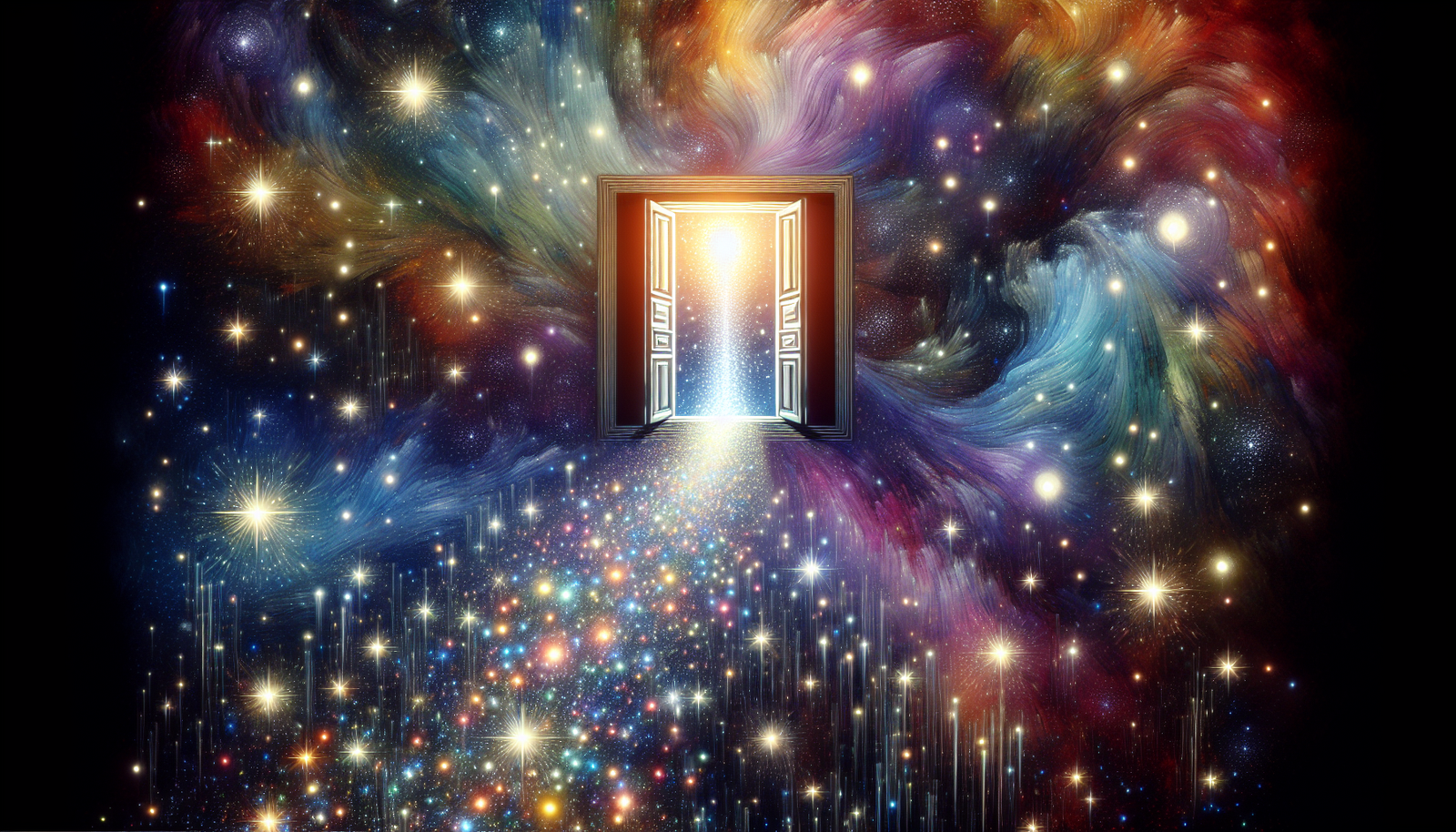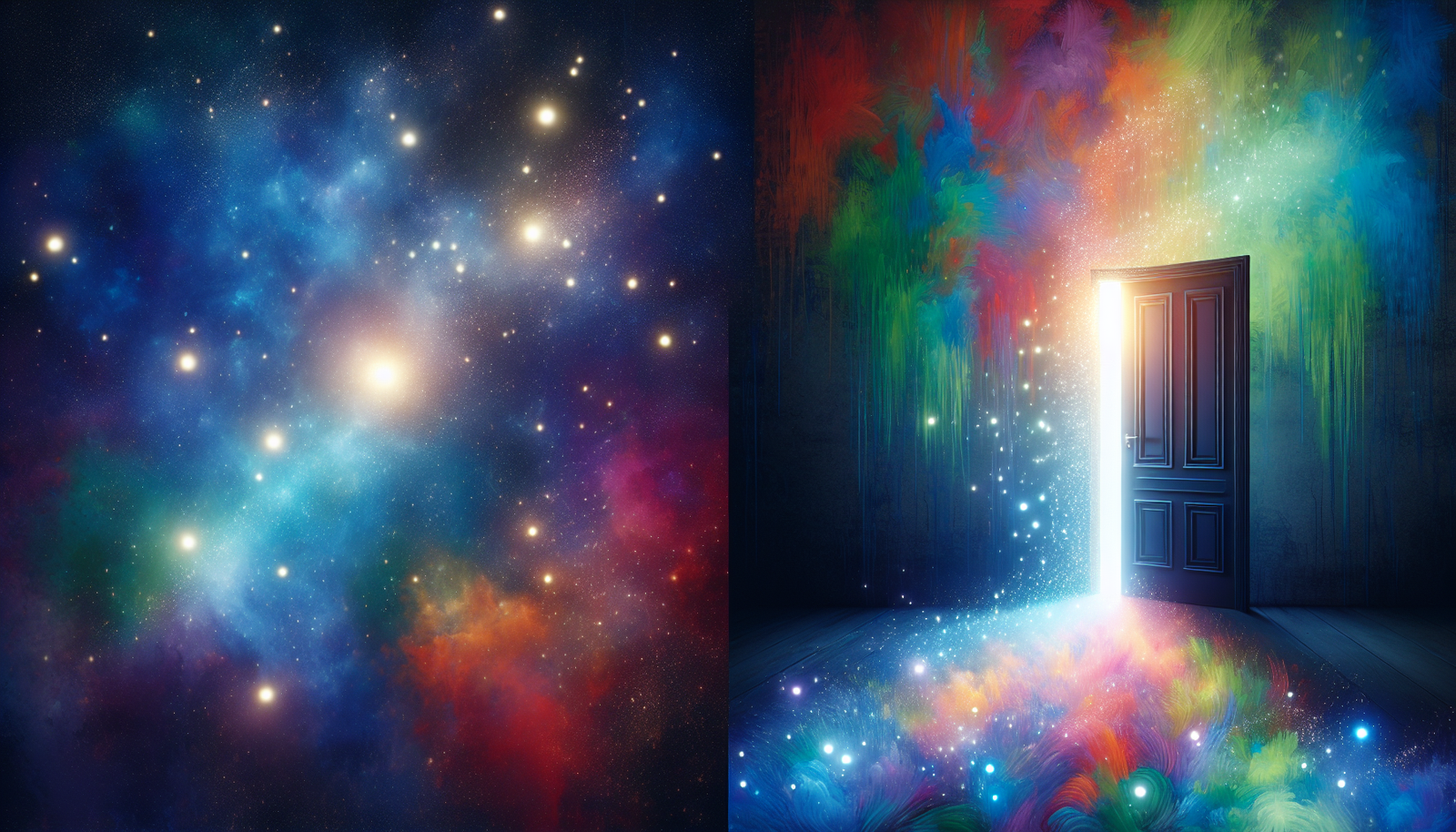The Mystery of Vivid Dreams
Strap in for an intriguing journey through the enigmatic world of vivid dreams. Imagine being the star of your own technicolor movie each night, where you fly above rooftops or sing like a superstar on a glitzy stage. Whether thrilling or terrifying, these experiences are universally fascinating. Get ready for an exploration into the mysteries and mechanics of bright, intense dreams, as this article guides you to understand why your slumbering mind can sometimes conjure such extraordinary, larger-than-life scenarios.

Understanding Vivid Dreams
Definition of Vivid Dreams
You’ve probably experienced a vivid dream at some point – those dreams that are so powerful, colourful, and detailed that you almost feel as if you’re living them. Vivid dreams can be highly immersive, emotional, and even alarming due to their realistic intensity. They can include sensory elements such as sounds, smells, tastes, and tactile sensations, making them hard to distinguish from reality.
The Science Behind Vivid Dreams
From a scientific perspective, vivid dreams occur during the rapid eye movement (REM) stage of the sleep cycle when brain activity is high. Neurotransmitters and brain regions such as the amygdala play a key role in generating these dreams. The amygdala is particularly involved in emotional processing, hence why vivid dreams often carry a strong emotional charge.
How our Brain Processes Vivid Dreams
The brain processes vivid dreams just like it does waking experiences. Vivid dreams activate similar brain mechanisms as when we are awake involving memory, emotion and sensation. Areas of the brain linked to visual processing and emotion such as the occipital lobe and the amygdala are particularly active which accounts for the detailed, colourful imagery and intense emotions vivid dreams can evoke.
The Phenomenon of Vivid Dreams
Occurrence of Vivid Dreams
We all experience vivid dreams, but the frequency and intensity can vary greatly among individuals. Some people report vivid dreams almost every night, while others recall them only occasionally. Factors such as stress levels, sleep quality, and certain lifestyle habits can influence the occurrence of vivid dreams.
Common Themes in Vivid Dreams
Common themes that emerge in vivid dreams can vary widely, but could include scenarios like being chased, falling, flying, or appearing naked in public. The intense, often surreal, nature of these dreams can leave a lasting impression and can even influence mood and behaviour upon waking.
Interrelation Between Emotions and Vivid Dreams
Vivid dreams often trigger strong emotions, like fear, joy, or sadness, that can seem incredibly real. Similarly, your emotional state can also influence the content of these dreams. For instance, if you’re feeling anxious or stressed, your dreams might reflect these emotions.
Impacting Factors on Vivid Dreams
The Effect of Sleep and Wake Cycles
Your sleep and wake cycles, or circadian rhythms, significantly influence your dream patterns. Sleep deprivation or disturbance can lead to more frequent and vivid dreams. Additionally, you’re more likely to remember your dreams if you wake up during the REM stage of sleep.
Diet and Substance Use
What you consume can impact your dream quality. For instance, certain foods, medications, or substances like alcohol and caffeine can stimulate brain activity, possibly leading to more vivid dreams.
Psychological Factors
Your mental well-being significantly impacts the nature of your dreams. People with conditions like anxiety or depression often report vivid and intense dreams. Similarly, traumatic experiences can potentially prompt a series of vivid dreams or nightmares.

Connection between Health and Vivid Dreams
Stress and Anxiety Influences
Excessive stress and anxiety tend to fuel vivid dreams. When you’re stressed or anxious, your brain is on high alert, which opens the door to more intense dreaming.
Impact of Medications
Certain types of medication, especially those used for mental health conditions, can often lead to vivid dreams. This is because these medications affect the chemicals in your brain related to emotion and cognition.
Conditions tied to Vivid Dreams such as PTSD and Depression
People with post-traumatic stress disorder (PTSD) often experience vivid, distressing dreams or nightmares related to their traumatic experiences. Similarly, people with depression can have disproportionate numbers of negative dreams which can exacerbate their sleep problems and mood disorders.
Artificially Inducing Vivid Dreams
Dream Induction Techniques
Various techniques can be used to induce vivid dreams, from simple tactics like consuming certain foods, or more complex methods such as the wake-back-to-bed technique, where you wake up two hours before your regular wake time, stay awake for a few minutes, and then go back to sleep.
Role of Meditative Practices
Meditative practices can also foster vivid dreaming. Activities like yoga and mindfulness exercises can encourage vivid dreams by heightening focus and awareness.
Use of Lucid Dreaming Supplements
There’s also the option of lucid dreaming supplements designed to help induce vivid dreams. These supplements typically contain ingredients like valerian root and melatonin, which are known to enhance dream recall and vividness.
Interpreting Vivid Dreams
Theories on Dream Interpretation
There are various theories on how to interpret dreams, from Freud’s psychoanalytic dream theory to cognitive theories that suggest dreams reflect our thoughts and preoccupations. It’s often up to you to explore and find the best interpretation that suits your personal experiences and beliefs.
Common Symbols in Vivid Dreams
While dream interpretation tends to be personal, some symbols commonly appear in vivid dreams. These can include elements like water, animals, or flying, each carrying a potential deeper meaning.
Clinical Approaches towards Vivid Dreams
Psychotherapy and Dream Analysis
Dream analysis is often used in psychotherapy and can provide insights about your subconscious thoughts and fears. By scrutinizing the images and emotions in your dreams, you can become more aware of the issues that might be bothering you.
Psychopharmacology and Drug Therapy Option
In some cases, if vivid dreams become too distressing or disruptive, drug therapies may be necessary. Certain medications can help suppress REM sleep and consequently reduce the frequency and intensity of vivid dreams.
Mindfulness and Cognitive Techniques
Mindfulness and cognitive techniques, like cognitive behavioural therapy (CBT), can be effective in managing vivid dreams. These techniques help you to understand, perceive, and react differently to your dream experiences.
The Cultural Dimension of Vivid Dreams
Cultural Interpretations and Beliefs about Vivid Dreams
Different cultures have diverse interpretations of vivid dreams. Some perceive them as prophetic or spiritual messages, while others view them as signs of changes to come.
Vivid Dreams in Art and Literature
Art and literature often depict vivid dreams, capturing their mystery, creativity, and emotional depth. From surrealist paintings blending fantasy with reality, to novels that dive into the mind’s dream world, the impact of vivid dreams on our cultural landscape is undeniable.
Role of Vivid Dreams in Memory and Learning
Potential Cognitive Advantages
Research suggests that dreaming may have cognitive benefits. It might help in creative problem-solving, emotional processing, and even memory consolidation.
Research on Sleep and Memory Consolidation
Studies have demonstrated a connection between REM sleep (when vivid dreams occur) and memory consolidation. These connections suggest that our dreams might actually be helping us to remember, analyze, and comprehend learned material more effectively.
The Mystery Unsolved: Unanswered Questions about Vivid Dreams
Controversial and Unexplored Aspects of Vivid Dreams
Despite significant progress in this domain, there remain many ambiguities and controversial aspects related to vivid dreams. From unanswered queries about what influences their occurrence to their actual purpose in our lives, the mystery of vivid dreams continues.
Future Directions in Vivid Dream Research
Today, vivid dreams remain an exciting area of research, with various new research avenues to explore. From the possibility of influencing dreams to therapies that can relieve nightmare disorders, future advancements promise to deepen our understanding of this fascinating phenomenon.

